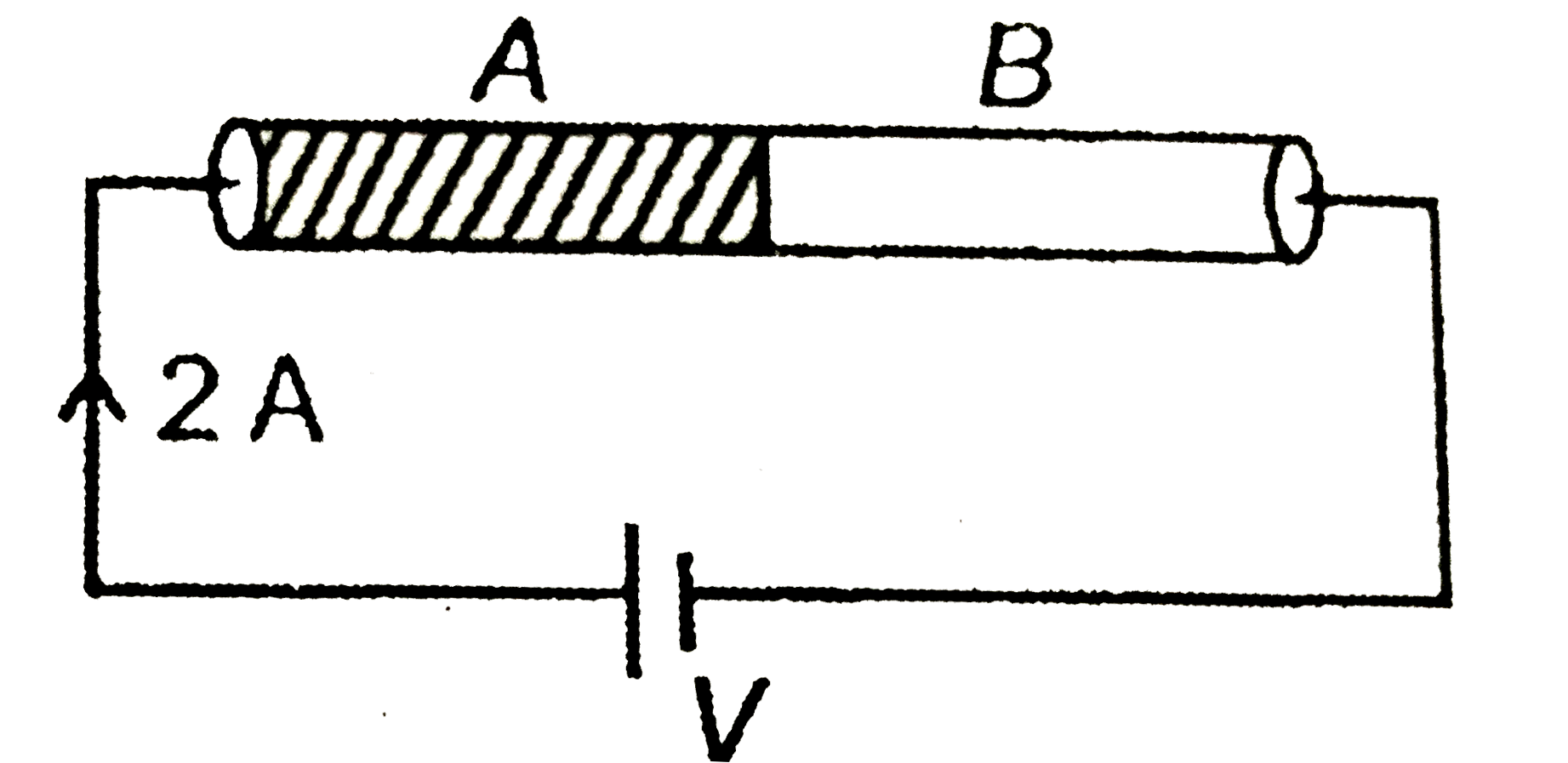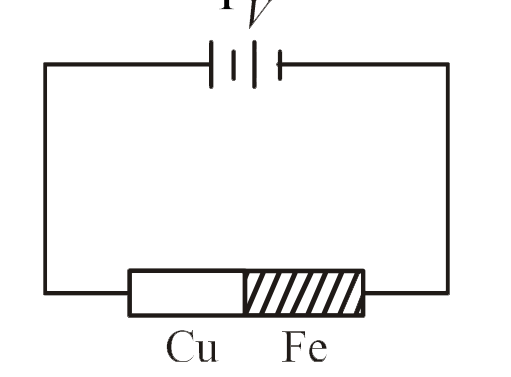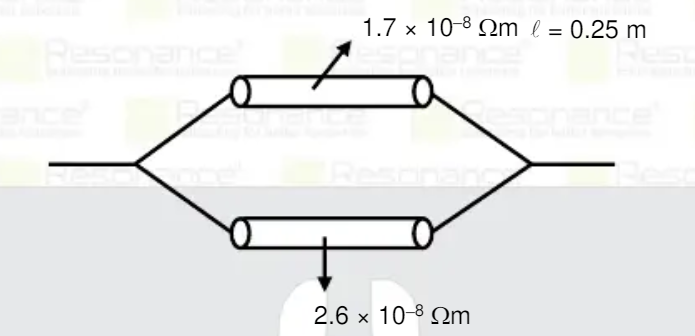Two metal rods are joined end to end, as shown in the figure . Both have same cross sectional area of 10−6m2 and each rod is 1m long. The rod A has electrical resistivity of 2×10−6Ω cm and B has electrical resistivity of 10−5Ωcm . The voltage V required of produce current of 2A in the rods is

0.12volt
0.24volt
0.20volt
0.36volt
The correct Answer is:B
V=iR and R=ρLA
RA=2×10−8×110−6=2×10−2Ω
RB=10−7×110−6=10−1Ω
Req=RA+RB=.02+0.1=0.12Ω
V=iReq=2×0.12
=0.24V
Topper's Solved these Questions
Similar Questions
Two rods are joined end to end, as shown. Both have a cross-sectional area of 0.01cm2 . Each is 1 meter long. One rod is of copper with a resistivity of 1.7×10–6 ohm-centimeter, the other is of iron with a resistivity of 10–5 ohm-centimeter. How much voltage is required to produce a current of 1 ampere in the rods?

View SolutionTwo rods of length 0.25 and area 3mm2 are connected as shown in figure and their resistivities are 1.7x10−8Ωm Find equivalent resistance

View Solution
Knowledge Check
Find the resistance (in mega Ω) of a wire of length 10 m, cross sectional area 1cm2 and made of a material of resistivity 100 Ωm.
A1000B20C500D10A square rod of aluminimum of length 1 m and length of the side of cross sectional surface 5×10−3 m will have a resistance (Resistivity of aluminimum 2.8×10−8 ohm-meter):-
A1.24×10−4ΩB2.42×10−3ΩC1.12×10−3ΩD11.2×10−3ΩA nichrome wire of length 100 cm and area of cross-section 0.5mm2 has a resistance of 2.2Ω. The resistivity of nichrome is
A110ΩB0.11ΩmC121ΩmD11×10−7Ωm
A copper rod of length 20 cm and cross-sectional area 2mm2 is joined with a similar aluminium rod as shown in Fig. 4.6. Find the resistance of the combination between the ends. Resistivity of copper =1.7×10−8Ωm and resistivity of aluminium =2.6×10−8Ωm.

View SolutionA wire of length 10 cm and area of cross section 1mm2 has a resistance of 5Ω. Find the resistivity of the material of the wire.
View SolutionFind the resistance of a copper coil of total wire-length 10m and area of cross section 1.0mm^(2). What would be the resistance of a similar coil of aluminium? The resistivity of copper =1.7×10−8(Ω)m and that of aluminium2.6×10−8(Ω).
View SolutionA composite rod is made by joining a copper rod, end to end, with a second rod of different material but of the same area of cross section. At 25∘C, the composite rod is 1m long and the copper rod is 30cm long. At 125∘C the length of the composte rod increases by 1.91mm. When the composite rod is prevented from expanding by bolding it between two rigid walls, it is found that the constituent reds have remained unchanged in length in splite of rise of temperature. Find yong's modulus and the coefficient of linear expansion of the second red (Y of copper =1.3×1010N/m2 and a of copper =17×10−6/K).
View SolutionTwo cylindrical rods, of different material, are joined as shown. The rods have same cross section (A) and their electrical resistivities are ρ1andρ2. When a current I is passed through the rods, a charge (Q) gets piled up at the junction boundary. Assuming the current density to be uniform throughout the cross section, calculate Q.

View Solution
